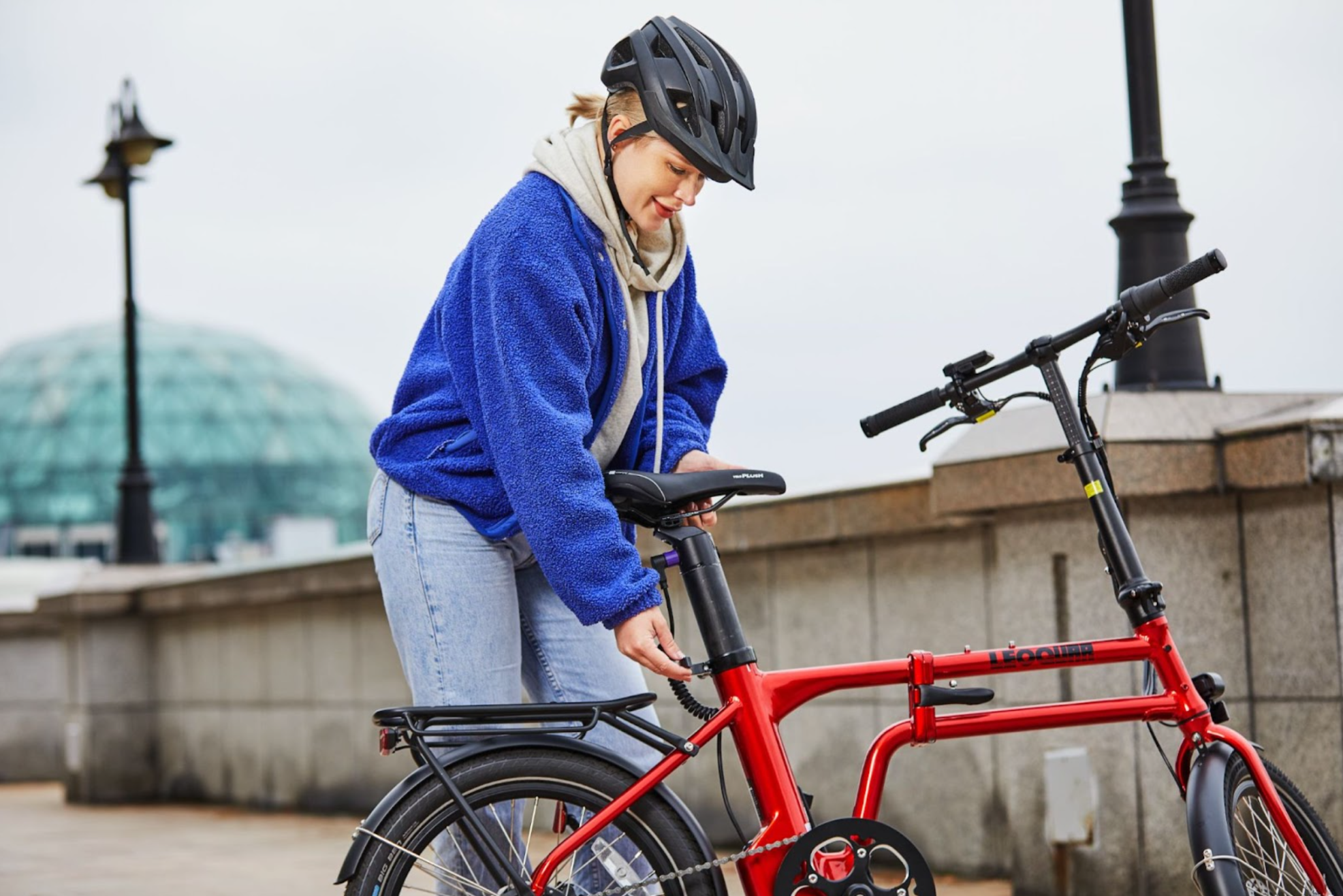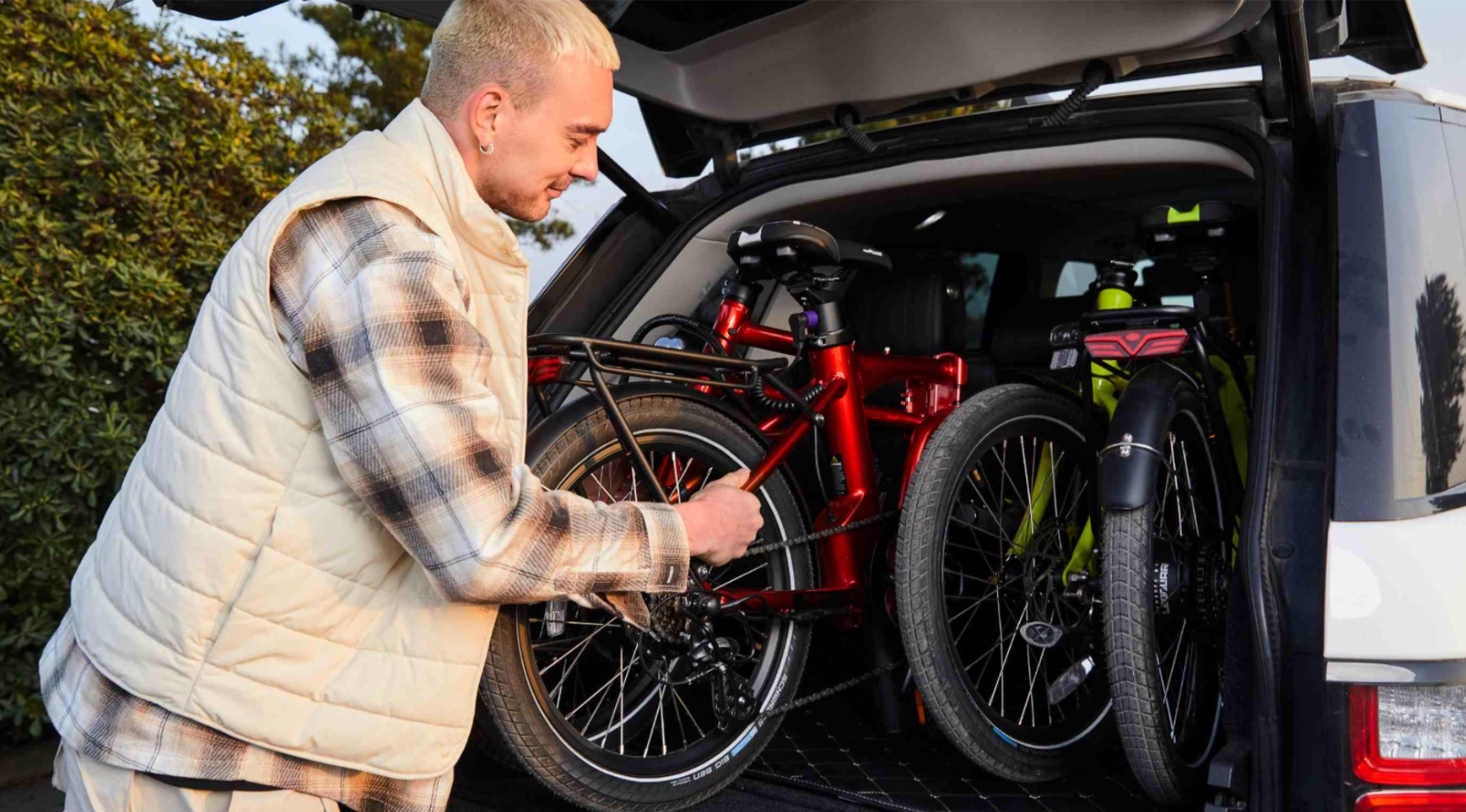What Is an Electric Bike?
Have you ever seen someone effortlessly ride past you on a bicycle, even on a steep hill? Chances are, they were riding an electric bicycle.
In recent years, e-bikes have become increasingly popular as an alternative mode of transportation. Whether you're commuting to work, running errands, or simply enjoying a leisurely ride, e bikes are revolutionizing the way we think about cycling, making it accessible to people of all ages and fitness levels.But what is an electric bike, and how does it work? This comprehensive guide will answer all your questions to help you understand this fascinating technology better.

What Is an Electric Bike?
An electric bike is a bicycle equipped with an integrated electric motor and battery. Unlike traditional bicycles that rely solely on human power, e-bikes combine your pedaling efforts with the assistance of an electric motor. This means the motor kicks in as you pedal, providing a boost that makes your ride easier, especially on hills or against strong winds.
This innovative mode of transportation merges the traditional elements of biking with modern technology. In this way, an electric assist bike allows you to cover longer distances, tackle challenging terrains with less effort, and offer an environmentally friendly alternative to traditional motor vehicles.
How an E-Bike Works
To figure out how an electric bike operates, it's essential to understand its key components and their functions. Let's break down the primary elements that make up an electric assist bike:
Electric Motor
The motor in an e-bike provides the extra power needed to assist the rider, converting electrical energy into mechanical work to help turn the bicycle's wheels. Motors can be placed in various parts of the bike, such as the front hub, rear hub, or centrally in the crank area, each offering different benefits in terms of balance, traction, and ease of maintenance.Motors are typically rated in watts (W), which indicates their power output. Common ratings range from 250W to 750W, with some models offering even higher ratings for more powerful performance.
Battery Function and Charging
E bike battery is the energy source for the electric motor. The best electric bike for the money usually comes with a lithium-ion battery due to its high energy density, lightweight nature, and long lifespan. To maintain balance, batteries are positioned low and centered on the bicycle. The battery's capacity is measured in watt-hours (Wh), and it determines how far you can travel on a single charge.
Controller
The electric bike controller acts as a mediator between the rider's inputs (such as pedal-assist or throttle use) and the motor's output. It ensures that the power from the battery is efficiently delivered to the motor, based on the rider's needs and the bike's current status.The controller takes input from the battery and distributes it to the motor based on the following:
- Throttle Input: When you use the throttle, the controller receives a signal indicating the desired speed or power level. It then adjusts the current flow to the motor accordingly.
- Pedal Assist System (PAS): In pedal assist mode, the controller works with sensors (torque or cadence) to determine how much assistance to provide based on your pedaling effort.
- Braking Signals: When brakes are applied, the controller cuts off power to the motor, ensuring safety and preventing damage.
By controlling the power flow, the controller manages the speed and torque output of the motor. The controller can also detect issues such as overheating, overvoltage, and short circuits, and take necessary actions to protect the components.

Pedal Assist and Throttle Modes
Electric bikes for adults generally offer two modes of operation: pedal assist and throttle. Pedal Assist is the most common mode, where the motor kicks in only when you pedal, providing a boost based on the effort you put in. It allows you to adjust the effort level based on your needs. This mode feels more like traditional cycling but with less strain, especially on inclines. Throttle mode, on the other hand, allows you to engage the motor without pedaling. You can control the speed by twisting a grip or pressing a thumb lever, and the motor propels you forward without pedaling (up to a certain speed limit). Some electric bikes combine both modes, giving riders the flexibility to choose their preferred method of propulsion.
Sensor
Sensors play a crucial role in the smooth operation of an electric assist bike. They detect the rider's input, send signals to the motor controller, and adjust the motor's power accordingly. There are primarily two types of sensors used:
- Cadence Sensor: This sensor detects how fast you're pedaling (rotations per minute) and provides assistance based on the number of pedal rotations per minute.
- Torque Sensor: A more sophisticated sensor, this detects the amount of force you're applying to the pedals and provide proportional assistance. The harder you pedal, the more assistance the motor provides for a more intuitive and natural riding experience.
This system seamlessly integrates into the bike's design to ensure a smooth, efficient, and effortless ride.
Display
The display unit on an electric bike is the control center, providing vital information and allowing you to adjust settings. Common features displayed include battery level, speed, assist mode selection, distance traveled, and power mode. Advanced displays might offer GPS navigation, heart rate monitoring, and connectivity to smartphone apps. The display helps riders stay informed about their ride and manage the bike's performance effectively.
What is Electric Bike Wattage?
When researching e-bikes, you'll often encounter the term "wattage." This refers to the amount of electrical power the motor can produce, measured in watts (W). It is a critical factor in determining the performance of an e-bike.In general, higher-wattage motors offer more power and assistance, allowing you to tackle steeper hills and maintain higher speeds. For instance, a 750W motor will provide more assistance on steep hills compared to a 250W motor. However, higher wattage also means more energy consumption, which can reduce the overall range of the electric bike. Therefore, it's essential to balance power needs with battery capacity to ensure the best performance for your specific use case.

What is Electric Bike Voltage?
Voltage is the electrical potential difference between two points and is measured in volts (V). In the context of e-bikes, voltage indicates the amount of power the battery can deliver to the motor. Common voltage ratings for e-bike batteries are 36V, 48V, and sometimes 52V or higher. Higher voltage systems generally allow the motor to run more efficiently and deliver more power. This can result in faster acceleration, higher top speeds, and better climbing performance. Take, for example, the Leoguar Flippo foldable electric bike, the best electric bike for the money. It features a 48V 10Ah (480Wh) Canbus Protocol battery, which offers impressive performance. In throttle mode, you can expect to travel 25-30 miles on a single charge, while the torque sensor mode extends the range to 50-60 miles. This electric bike also boasts a top speed of 20 MPH, making it an excellent choice for both city commuting and leisurely rides. The high voltage and capacity of the battery ensure that you have ample power and range for various riding conditions.
Benefits of Using an E-Bike
Eco-Friendly Transportation
E-bikes produce zero emissions, making them an eco-friendly alternative to cars and motorcycles. Additionally, e-bikes are often made with sustainable materials and technologies, further enhancing their green credentials.
Cost-Effective Commuting
E-bikes can save you money in the long run. While the initial investment might be higher than a traditional bicycle, the savings on fuel, parking, and maintenance can quickly add up. E-bikes are also cheaper to operate than cars or public transportation, especially for daily commutes.
Health and Fitness Advantages
Riding an e-bike is not only fun, but also beneficial for your health. It encourages physical activity, which can improve cardiovascular health, build muscle strength, and enhance overall well-being. The pedal assist feature allows riders to control the level of exertion, making it suitable for people of all fitness levels. Whether you're looking to stay active or need a low-impact exercise option, an electric bike can help you achieve your fitness goals.
Getting Started with Your E-Bike
E-bikes are a fantastic innovation that combines the joy of cycling with the benefits of electric propulsion. Whether you're looking for an eco-friendly transportation option, a cost-effective way to commute, or a new way to stay active, electric bikes offer something for everyone. Now that you know what is an e bike, how it works, and its benefits, you're ready to explore the world of e-bikes and find the perfect ride for you. With responsible riding practices and proper maintenance, your electric bike can be a reliable and enjoyable companion for many years to come.